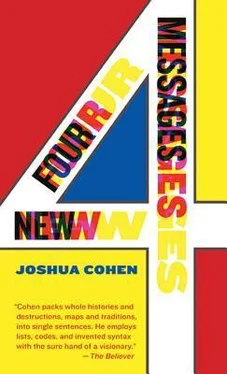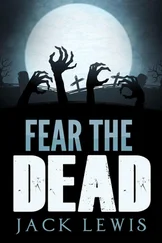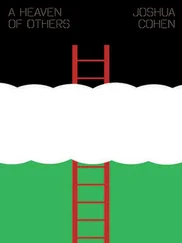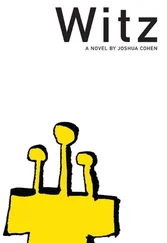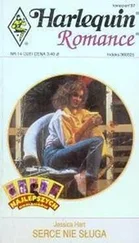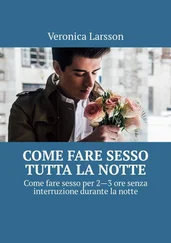Greener was the type who’d give you a cig but not a light.
I said, I was born here, completed every school here, Future Farmers of America central district secretary, which might not mean a lot to you but.
Greener interrupted to ask, What conceivably could have made you a writer?
The prairie grasses, the wheaty wilds, the good solid old-style people.
Bullshit.
Bullshit’s a valuable fertilizer.
We’d walked into an unfertile field. A disused roughly triangular or sideways conical in its footprint pitch at the ragged edge of campus, which the baseball team— Ra, Ra, Bara Cara, Hep Hep, Don’t You Dare-A —had used for practice before the new stadium was built.
A pitch outgrown with weed, rutted with deep mud troughs where the dean’s tractor had rusted. Haybales, scattered silage troughs, hose. A pecked senseless scarecrow, straw packed into the uniform of last season’s starting pitcher from a rival team one state over.
Greener and I stood next to each other along the lip of the outfield, dividing what was collegiate from pure nature.
He asked to feel my hands.
When we clocked in for the next week’s workshop, a group of sincere and avidly morose shufflers, the room door had a slice of notepaper taped to its window at a reckless angle, pat will bring you down to the field —the handwriting that schoolboyish amalgamation of broad block and cramped cursive we’d become pros at deciphering — as for Pat, that’s still me, and though Greener hadn’t cleared this responsibility with me in advance, I led.
Trust me. Mind the foul lines. This way toward the margin. Rounding third base, second base, first.
Incredulous backpackers with mss., citrus pop going flat in our canteens.
We were twelve in that class assembled on a cooling day down at the rubbled heel of the pasture.
I was going to give a speech, Greener said.
But I won’t.
He was standing on a haybale atop the pitcher’s mound, then realized it was teetering shaky and stepped down to what remained of the dirt, a curveball’s slogged mire.
Can everyone hear me?
He rocked for warmth — his suede breaker too light, it was just for style — clapped frayed Knicks cap over his ears, noosed tighter the unraveling knit scarf.
People are going to say I was homesick, he said, but that’s just not true. Let me dispel. Allow me my disabuse. It’s just that I can’t in any way intuit how you all can write out here, with so much air and sky, with such openness, no disruptions, no disturbances.
Chiefly, nothing to compel ambition.
No opposition, no shadow, no shade for your toil.
We had no notion what he was saying.
Here, and he dug a sneaker toe into earth, we’re going to build a sanctuary, a monument to our own publishability. Can everyone hear me? How many of you have been to the city?
The answers were: we all could hear him and only one or two warily raised hands — Rog and Bau, who’d won partial scholarships to a summer writing program (indeed at the very school I’m checking out).
On this pyramidal plot, he said, on this decaying diamond, we’re going to make ourselves a culture — just for us and for whoever might suffer this school after, so that they might know what it’s like to live in a culture, what it’s like to be in a culture, to have culture, not just this organized sports frattery and hayseed academe.
In the grass grown wild at his feet was a shovel, a rusticated bluefaced tool he bent to and picked up and kicked into earth, breaking ground.
Broadway’s a difficult street, it’s touchy, temperamental, a diva — Greener tossing a shovelful of soil into the wind, the silty loam gusting back into his face and so he stalled, not to brush but to swallow — Broadway’s historic, taking time to find its bearings.
Dig deep into your thesauri for this: slithery, serpentine, anguiform even: you see that in how it winds up from the Battery and Wall Street (Greener dramatizing by digging the path with the shovel from his groundbreaking up toward the mound), how it swerves shyly to avoid Washington Square (he reached to a back pocket for a pair of mittens, dropped them), then suddenly cuts off (he took off his cap), at Union Square (dropped the cap), in preparation for its regeneration, regrowing itself in realignment when it crosses Fifth Avenue (the perimeter of the mound itself heading toward the bale), taking the central action of town and reorienting it to the westside.
That’s where downtown grew up — on the westside — is this making sense?
We nodded.
Don’t forget I’m speaking as a pedestrian, as a weekend cartographer in comfortable shoes — I was walking you through the thoroughfare north, though the traffic, I have to say, flows south.
Nodding.
But we’re particularly concerned with that intersection, where Broadway walks all over Fifth — one to become the snobby society money boulevard, that ignorant lilywhite stretch, the other to become that concourse of dirty miscegenation, a corridor potholed, poorly sidewalked and stuck with gums, obscurely tenanted — Broadway, the broad way, the wrecked wide and embracing inclusive anything goes way, the name almost unpacks itself.
A breeze blew in, autumn hinting at winter.
We shivered.
And we’re going to remake that here, he said, rather its landmark.
His hands described a structure in air, cold lines of cold air.
From now on all classes will be held out here under the clouds, both semesters regardless of weather — I’ve managed to persuade the school to approve our use of this field.
There will be a dress code.
He was calibrating, calculating.
There will be forms to sign, insurance waivers.
He steeled himself to say, You won’t be handing in writing for the rest of the year.
Which is how we began building, began rebuilding, the Flatiron. Built in 1902 and originally known as the Fuller Building — after the pioneer of the modern skyscraper and inventor of the system of “contracting,” G. A. Fuller, *1851–†1900, whose firm went on to build Penn Station, Macy’s Department Store, the Plaza Hotel, and the original New York Times Building, all of which are too uptown for our itinerary — the Flatiron was “the first great skyscraper in New York,” though it was “built in the style of Chicago” (its architect was a Chicagoan called Burnham) — all this according to the infopacket Greener passed around along with photocopies of the original blueprints illegally reproduced from the archives of the New York Historical Society (an exgirlfriend librarianed there, he’d said, Greener was always mentioning exgirlfriends — one who’d starred in a blaxploitation flick he forbade us from mentioning, another who’d had her own let’s meet our panel of nymphomaniacal nannies talkshow — I often had the feeling he’d come out to our crop only to avoid the famous feminine back east).
Also included in the packet were photos: souvenir posters and postcards, antique panoramic exposures and aerial snaps, in color and, why not, black & white (which Greener declared the only colors worth building for). The building looks different in every shot. Seen from the front it resembles a single column, as upright as Classicism, as upright as Neoclassicism, a spine straight up and down, but seen from the side it’s a monstrous wall, like a cursorless screen, or that virtually blank page that’d directed us down to its rising. Greener quoted numerous writers — of fiction and poetry of the period of the building’s initial erection — comparing that frontview to a steamship steaming its prow up the avenues, and the sideviews, both starboard and port, to a sailboat’s sail or the blade of a knife — Greener remarking, however, that since it was built on an island, was built on a traffic island, if the building was a boat, it was beached. Though the Flatiron was among the first genuine skyscrapers to be constructed of steel — previously steel wasn’t considered entirely reliable, its properties not yet understood — it didn’t get its name from the metal that made that material. Rather the name that branded the building and district as enduringly as the building itself branded the city, predates construction, deriving from a resemblance — evident to the nineteenth century, aka the century Greener thought we were from — between the Flatiron’s future plot and a clothes iron. (I’m writing this not on the W’s room’s desk, which is filled with Veri’s purse and cosmetics, but on the ironingboard retrieved from the closet, remembering Dem pressing our pleats, cooking soufflé buffets with truffles. Remembering myself walking fantasy crossroads with Greener, talking plans, talking tenants — Greener pointing out how the Flatiron separates downtown, which creates the art, from midtown, which rapaciously profits from it, how the building itself points north toward the agents and publishers, toward the magazines too, who’ll be so interested in this project, they’ll send photographers, glossy journalists with expense accounts equivalent to a year’s pay for my freshman comp adjuncting — grandiosity!)
Читать дальше
